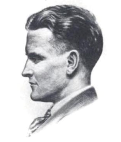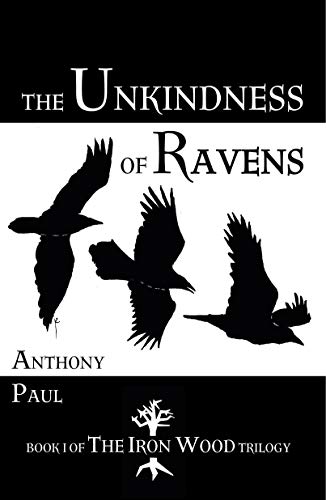The Great Gatsby by F. Scott Fitzgerald
Page 6 of 25 - 1 2 3 4 5 6 7 8 9 10 11 12 13 14 15 16 17 18 19 20 21 22 23 24 25 Purchase full notes for £6.95 (aprox $10.84)
It is this strangeness of the East Coast that draws together all the experiences of the book’s major characters who journey from West to East:
I see now that this has been a story of the West, after all – Tom and Gatsby, Daisy and Jordan and I, were all Westerners, and perhaps we possessed some deficiency in common which made us subtly unadaptable to Eastern life. ( Ibid .)
At the root of Nick’s difficulties with the East is precisely this ‘quality of distortion’ ( ibid .) – of ambiguity – that has, perhaps, been the real theme of the novel all along. The wonderment Nick originally felt towards Gatsby’s lavish summer parties on his ‘blue lawns’ has been transformed into a macabre nightmare painted in the solemn palette of an ‘El Greco’ painting:In the foreground four solemn men in dress suits are walking along the sidewalk with a stretcher on which lies a drunken woman in a white evening dress. Her hand, which dangles over the side, sparkles cold with jewels. Gravely the men turn in at a house – the wrong house. But no one knows the woman’s name, and no one cares. ( Ibid .)
Even without Fitzgerald’s pointed use of the word ‘Gravely’ this vignette has the feel of a funeral about it: a funeral of the American Dream perhaps?Gatsby has always been seen by readers as searching for the ‘American Dream’ – and there are numerous references that imply such a connection to be among Fitzgerald’s intentions for the novel, all of which are detailed in the notes below. Nonetheless, Gatsby’s significance is perhaps more that he represents a far older ‘dream’ than the American one, and one that much exercised the minds of several of F. Scott Fitzgerald’s literary contemporaries in Europe. That dream is represented by the voyage home of the Greek hero Odysseus, recently used as an archetype and structural paradigm in James Joyce’s novel Ulysses , published in 1922, four years before The Great Gatsby . Odysseus is also a figure at the heart of Ezra Pound’s Cantos and the presence of numerous allusions to the Homeric story in Fitzgerald’s novel is an interesting reminder that he is every bit as much a modernist as these writers, who are, perhaps, more usually associated with that label.
All of the detailed allusions to the Odysseus’ story are given in the notes below, but here it is worth recalling the broad outline of Gatsby’s career in this context. His ‘advent’ – his christening as ‘Jay Gatsby’ – comes with his rowing out to Dan Cody’s yacht, from which point Fitzgerald takes every opportunity he can to associate Gatsby with sailing craft, sailing off, in a sense, towards his dream just like those first Dutch sailors who are evoked on the penultimate page of the novel heading for ‘a fresh, green breast of the new world’ (187). For a contemporary American, of course, that vision itself is a ‘homecoming’ – a rediscovery of the very first European ‘Dream of the Americas’. The symbolic journey of Gatsby’s life is easy to see in more specifically Odyssean terms.

